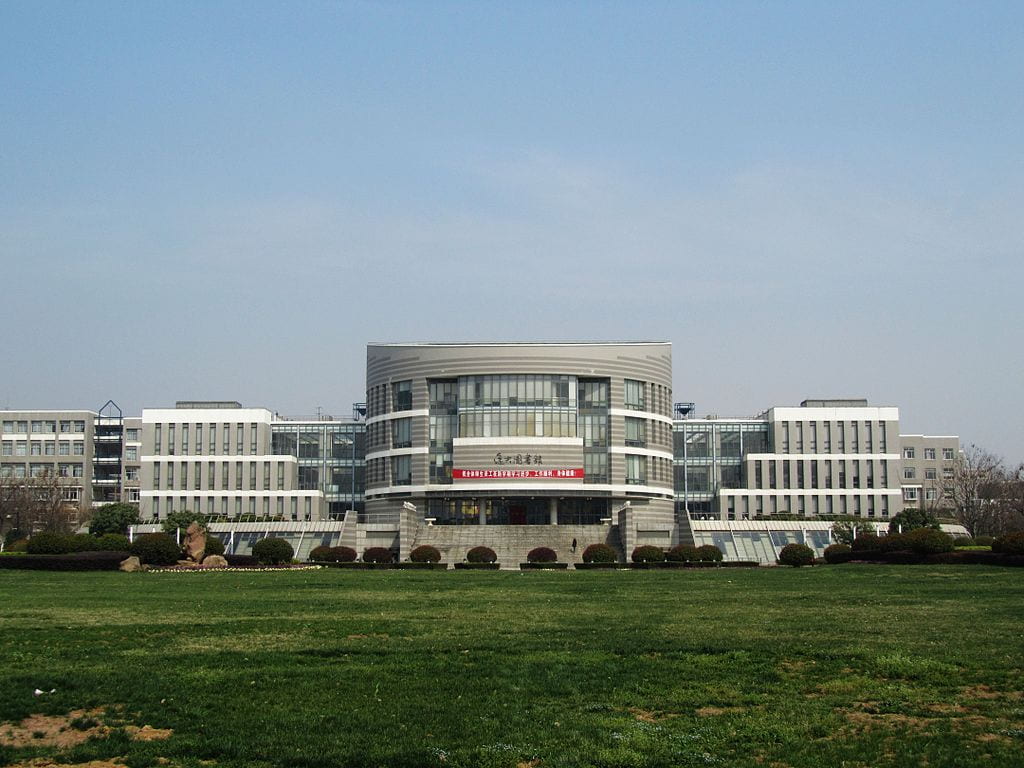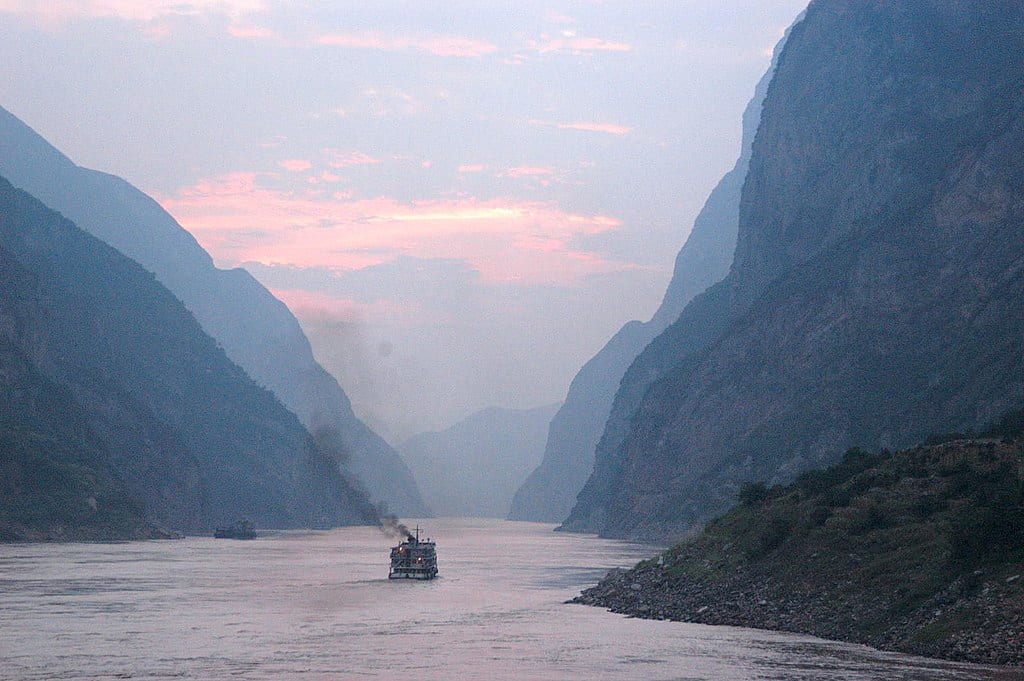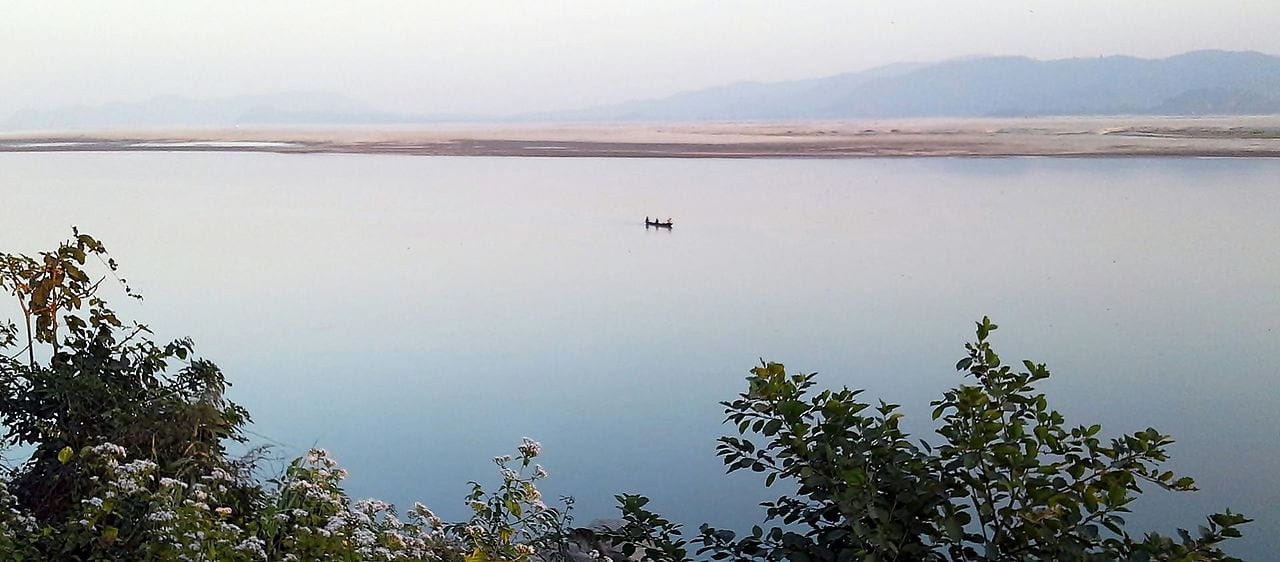Associate Professor of International Law, Hohai University School of Law and The Johns Hopkins University-Nanjing University Center for Chinese and American Studies

In this issue’s Q&A, Texas+Water Editor-in-Chief, Dr. Todd Votteler, interviews Wang Zihijian, Associate Professor of International Law (Water Rights), Hohai University School of Law and The Johns Hopkins University-Nanjing University Center for Chinese and American Studies. Professor Wang has an Master of Science in Law and a doctorate in international relations from the Hohai University and Nanjing University of International Relations respectively. He has a postdoctoral certificate in hydraulic engineering, emphasizing water rights of international rivers. His research focuses on issues relevant to international rivers’ environmental protection and regional basin development, as well as hydro-politics and international river law.
Zihijian has authored three books: International River and Regional Security (Hohai University Press, 2011), and International River Law (Law Press, 2012), Hydro-hegemony, Security Order and Institution Construction: On International Rivers Political Complex (Social Sciences Academic Press, 2015). He has also published nearly 30 additional publications.
He directs the International River Law Network (IRLN) under the Capacity for Development program of the European Commission website, through which he uses E-meetings, surveys and feedback to discuss how to improve international water cooperation throughout the world. He developed the Basin Rights of International Rivers Database, which includes 276 international river basins nature rights; basin/country human rights to water; and basin/country water rights.
Recently, Dr. Votteler traveled to Nanjing to present at a workshop on water media at Hohai and lecture at Hohai and The Johns Hopkins Center on the binational management of the Rio Grande Basin. This interview was the result of that exchange.
For decades Hohai University was administered by China’s Ministry of Water Resources. Today, how is Hohai unique among universities in China?
Hohai University was the first higher education institution to train water conservation professionals in China. Today, it is the still the most renowned university for its water related research. There are nearly a thousand teachers [including full professors, associate professors and assistant professors] engaged in water-related scientific and human studies at Hohai. Currently Hohai is providing world-class education in water conservation engineering, and environmental science and engineering. This means that we have the best water engineering and water protection research in China, making Hohai University unique for its sustainable water project studies.

Hohai University, Jiangning Campus. Source: Wikimedia Commons
What are your water research interests?
My research interests focus on international river law. My research is focused specifically on international rivers where surface water is hydrologically connected to groundwater systems that also cross country borders. The legal term for these systems is “International Watercourse” as defined in the 1997 Convention on the Law of the Non-navigational Uses of International Watercourses. It is not accurate to use “international water law” to embrace “international river law,” because international water law focuses more on environmental protection of water resources, while international river law focuses on the equitable and reasonable use of transboundary rivers. Additionally, my research is not limited to non-navigable waters, but includes navigable waters as well. That is to say, I research both the surface (exclusive territorial sovereignty) and the body (water resources per se, the shared property) of the international river.
In terms of international river law, my research specifically focuses on international water rights, although this term seems ambiguous nowadays. It should include the rights of the river life, the rights of the basin’s human population, and the rights of each basin’s specific country. The rights for the basin countries can also be categorized as chronological rights, hydrological rights, and international treaty rights. Because the traditional international water rights can no longer elucidate the current rights of an international river, I proposed the Basin Rights of International Rivers approach in 2016. I am still improving this approach.
Is environmental conflict resolution a significant focus of the curriculum at Hohai?
Yes, resolving environmental conflicts is one of the focuses of the Hohai curriculum. Hohai University has hundreds of research institutions related to water resource use, protection, management, and cross-border cooperation. Each institution has its own research focus, and environmental conflict issues are considered to some extent. However, the College of the Environment mainly fulfills the curriculum setting. Currently, the College of Environment offers environmental engineering, environmental science, environmental ecological engineering, water resource protection and ecological restoration, modern water treatment technology, water environment simulation and ecological hydraulics, environmental planning and evaluation, environmental chemistry, water pollution control, sewage recycling and low-carbon development technology, environmental microbiological research, environmental water conservancy science, etc. Altogether, there are hundreds of courses on environmental conflict resolution, which could be chosen by students at different levels.
What water issues seem to be of most interest to your students?
My students have different majors. Most of them study international law, some of them study international relations and some foreign students focus on water engineering. The main interest they show is international water politics of the different basins, especially in developing regions. They want to know how each basin country deals with water conflict and what factors worsen the scenario and what factors promote the cooperation? They want to know how to improve the water justice between countries is another interesting question they always raised.
Hohai University appears to attract a large number of international students who are focused on water. From what countries do most of the international students come from, and do most of these students return home to work after completing their degrees?
As far as I know, foreign students in Hohai are mainly from South Asian countries such as India/ Nepal, Southeast Asian countries such as Thailand/ Laos/ Vietnam. Middle East and African countries also contribute many students as well. Most of them will return to work in their home country after completing their studies.
What do you believe are the most significant water issues in China today?
Domestic water pollution is the most significant water issues facing China today. Due to the shortage of water management and the lack of water protection, the high-speed economic development will be unsustainable. So, it is very wise for the government to pay more attention to protecting the Yangtze River and Yellow River Basins which are the most developed areas in China.

Dusk on the Yangtze River. Source: Wikimedia Commons
Is reservoir construction the primary focus for the development of new water supplies in China (which include hydroelectric dams for power supplies), or are other alternatives such as seawater and brackish groundwater desalination, aquifer storage and recovery, and water reuse becoming important alternatives?
For a long time, the construction and development of reservoirs has been the most important means of utilizing water resources in China. Reservoirs can store water for irrigation, flood prevention, aquaculture and tourism. Similarly, reservoir construction and development can also improve and protect the ecosystem.
In the future, water reuse and desalination will become important alternatives in some northern coastal cities. Recycled water is known as the second source of water in the city. However, currently the recycling rate of urban sewage in China was below 10 percent. Compared with the rate in some developed countries of more than 70 percent, there is still a large gap. In some cities in northern China, where per capita water resources are scarce, water reuse has become their long-term strategy in water development.
The cost of seawater desalination in China ranges from 5 to 6 yuan (about 40 US cents) per cubic meter, which is roughly twice the price of domestic water. With the continuous expansion of China’s coastal cities, the rise in water prices is still expected to be strong. China plans to fulfillment the industrialization of seawater desalination in 2020, and the amount of seawater desalination will reach 396 million to 528 million gallons per day [1,215 – 1,620 acre-feet].
China shares nearly 20 international rivers with neighboring countries. What challenges and opportunities do you see for these shared rivers?
For international rivers, sustainable development is still the strategy for China’s water policy. The current difficulty is the lack of the theory of elucidate the “equitable and reasonable utilization,” which has already been seen as the customary international law, and to apply the principle to China’s periphery water context, while alleviating the “China water threat” myth.
China, India, and Bangladesh share the Brahmaputra River yet there are no treaties between any of these countries regarding this transboundary river. What do you think are the prospects for the adoption of a treaty between the three countries with regard to the Brahmaputra?
According to article 2 of 1969 Vienna Convention on the Law of Treaties, “treaty” means an international agreement concluded between States in written form and governed by international law, whether embodied in a single instrument or in two or more related instruments and whatever its particular designation. Nowadays, the name of a international treaty include Treaties, Conventions, Charters, Statutes, Covenants, Agreements, Protocols, Exchange of Notes, Memoranda of Understanding, Joint Declarations, Joint Declarations, etc.
There are many bilateral treaties between the three countries on the Brahmaputra River. Recent treaties include: MOU on the provision of hydrological data River to India by China in Flood Season (2008, China-India); MOU on the provision of hydrological data River to Bangladesh by China in Flood Season (2008, China-Bangladesh); Treaty on sharing of the Ganga/Ganges waters at Farakka (1996, India-Bangladesh). Until now there is no trilateral treaty between the three countries.
It is unlikely that a multilateral treaty would appear in the near future. Even if China, India, and Bangladesh were to sign a multilateral treaty in the future; it is not a basin wide treaty because the Brahmaputra River is hydrologically an integral part of the Ganges-Brahmaputra-Meghna basin, which also includes Nepal, Bhutan, and Myanmar. To achieve basin/integrate management, these three countries all have the right to participate in the negotiations. This would obviously be a very long process.

The Brahmaputra River is a trans-boundary river and one of the major rivers of Asia. It is also the largest river in the North East India. Source: Wikimedia Commons

